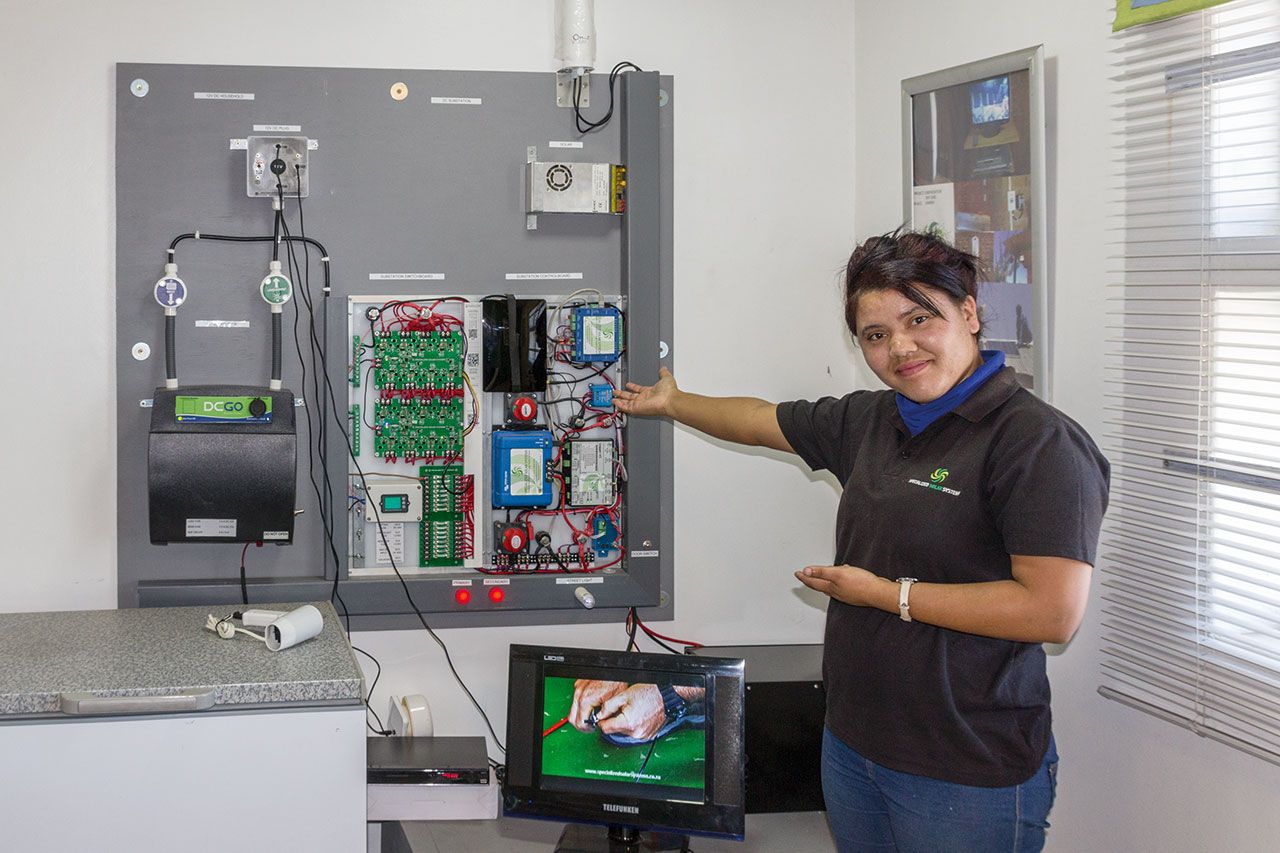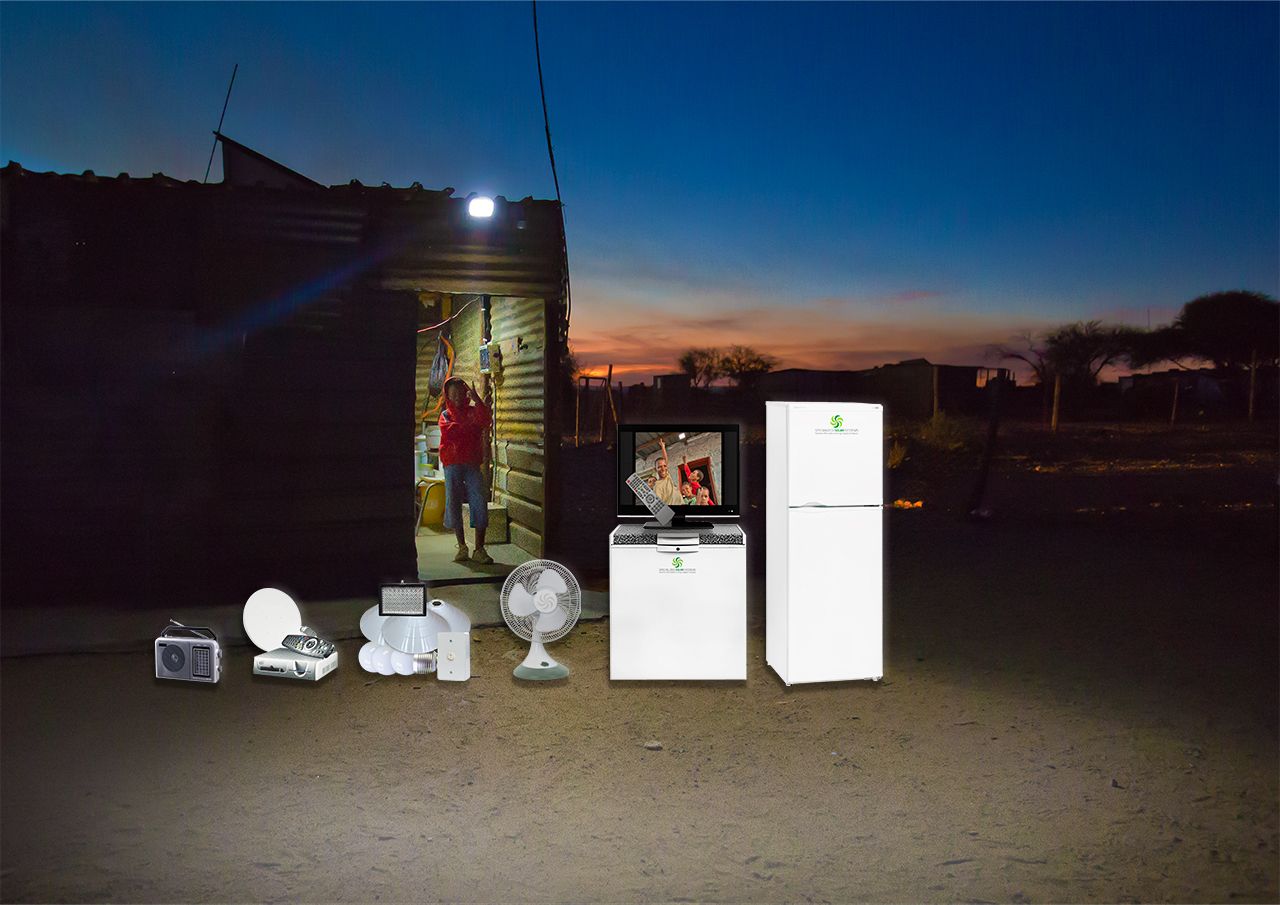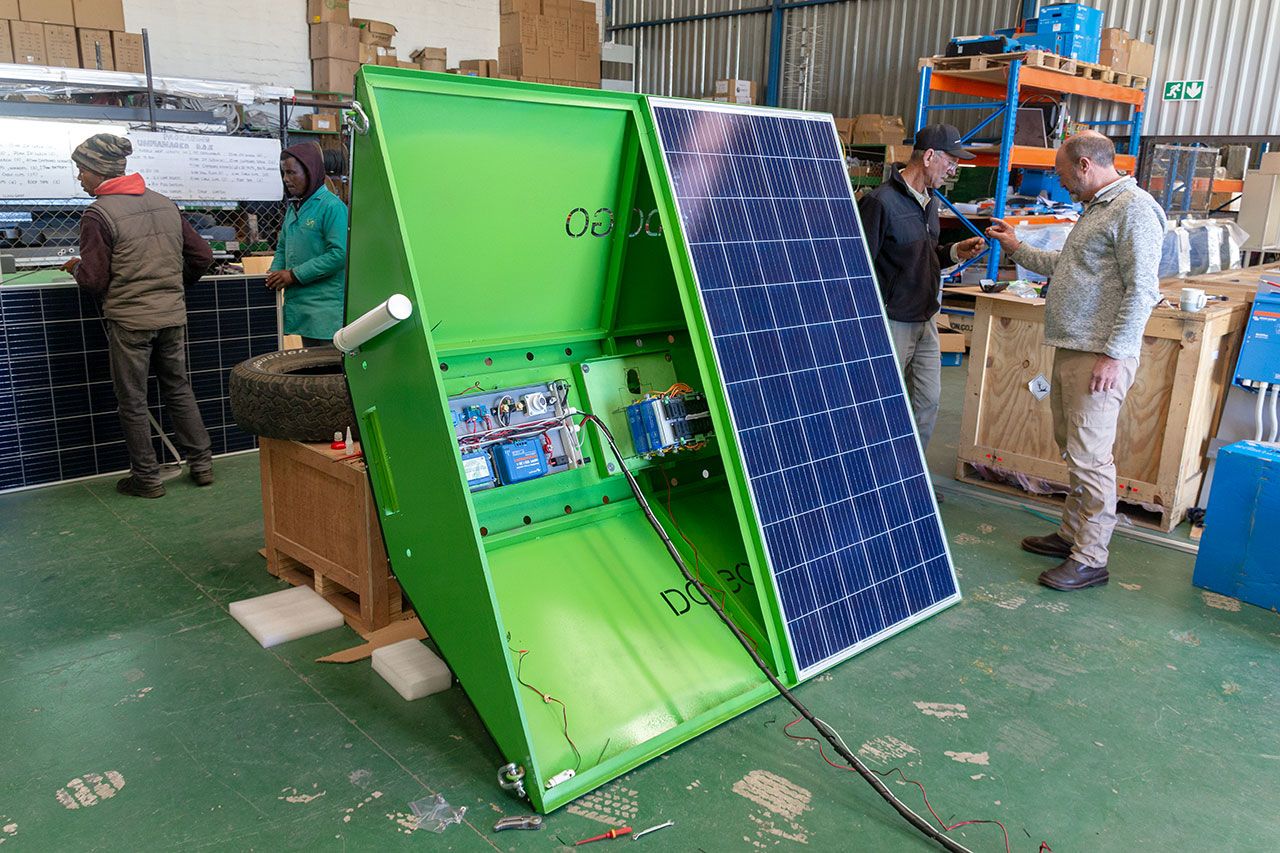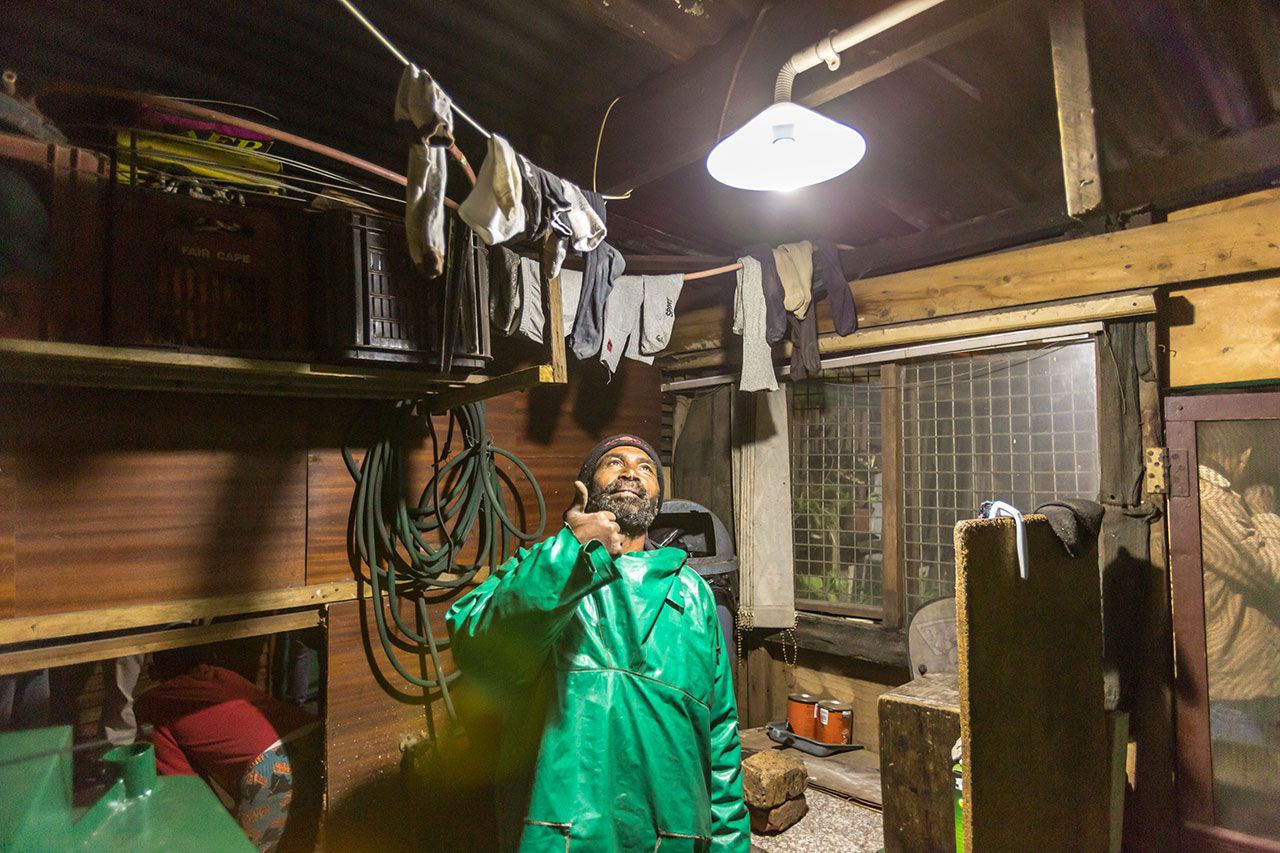Off-grid Electrification: An Overview of Low-Voltage DC Distribution Solar Tower Smart Grids by Specialized Solar Systems by Andrew Behrens
Energy growth isn’t just a matter of progress; it’s intricately tied to global well-being and prosperity. However, meeting the increasing demand for energy in a safe and environmentally responsible manner poses a significant challenge.
In Southern Africa, current standards and installation regulations for electrification have predominantly centered around alternating current (AC). Yet, national grid electrification is beset with challenges and proves to be a costly and outdated framework in our technologically advanced era.
In the video, Peter Bergs delivers an engaging introduction to Specialized Solar Systems, providing a comprehensive overview of our DC Electrification initiatives
Energizing the Future: Pioneering Sustainable Solutions for Underserved Communities in Southern Africa
For communities without access to electricity in Southern Africa, providing AC grid electricity is economically impractical. The insufficient generation capacity means that delivering energy to peri-urban and rural communities is often deprioritized in comparison to industrialized and commercially developed areas.
Enter the low-voltage DC electrical distribution model—a perfect solution for peri-urban areas that fall outside the legal parameters governing formal AC electrification infrastructure and distribution. It’s not just a practical alternative; it’s a step towards equitable energy access, addressing the unique needs of underserved communities.
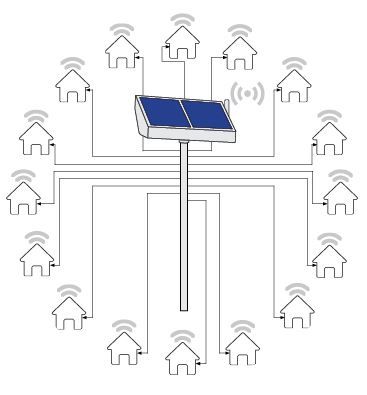
Empowering Lives: Specialized Solar Systems’ Innovative Energy Wants & Needs Classifications
Since 2008, Specialized Solar Systems (SSS) has been at the forefront of providing electrification solutions for those underserved by the South African National Grid. Our extensive experience has not only shaped our expertise but has led to the formulation of a set of groundbreaking energy supply principles, challenging the norms of traditional electrification.
Through collaborations with universities, NGOs, government entities, and private enterprises, we’ve uncovered a revolutionary approach. It became evident that by focusing on the energy requirements of individuals in the targeted LSM 1-3 categories, we could fulfill their basic energy needs using low voltage (LV) direct current (DC).
These principles stand as a testament to our commitment to prioritize electrification delivery for disconnected rural and peri-urban informal settlement communities. By incorporating efficient DC appliances, our low-voltage DC electrical distribution system caters to the energy wants and needs of impoverished consumer demographics, starting with the essentials and progressing to comfort and luxury appliances.
In essence, we’re not just providing power; we’re empowering individuals to enhance their quality of life, offering a spectrum of energy options that align with their evolving requirements. Specialized Solar Systems: Revolutionizing energy delivery for a brighter and more inclusive future.
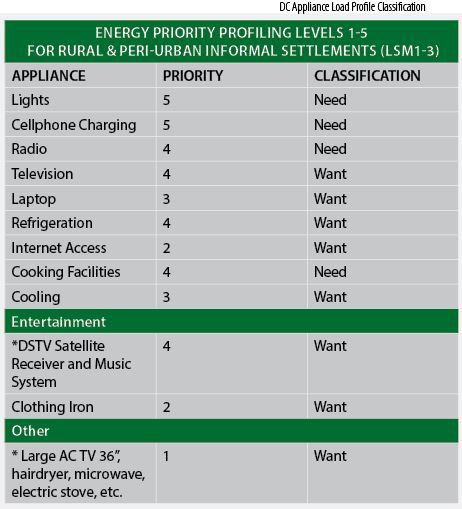


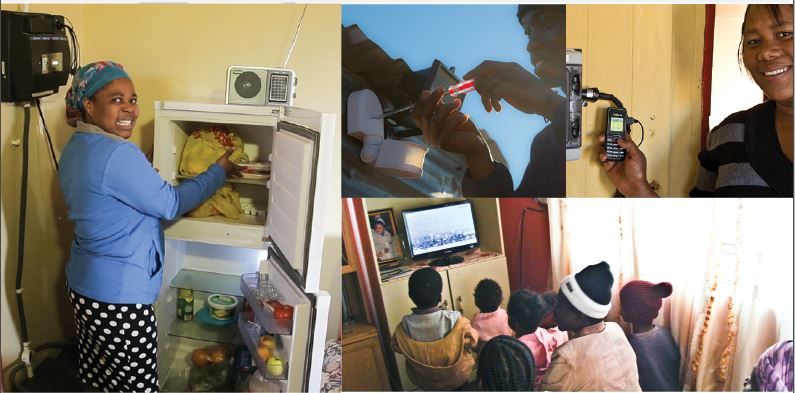
Low-voltage Solar Electrification: Creating a Sustainable Business Model
Efficiency meets innovation in the world of energy! By optimizing low-voltage DC appliances, we can establish a load profile with assigned priority numbers. Leveraging these profiles, we unlock the potential for a sustainable energy supply model through photovoltaic (PV) systems paired with modern storage technologies.
Our meticulous modeling of daily energy generation, factoring in historical and unforeseen variables, ensures a robust system. Effective utilization of generated and stored energy is achieved through vigilant monitoring and evaluation, distributing power seamlessly between the PV generator, storage, and consumption.
Empowering consumers to contract individually selected bundled DC appliances, coupled with real-time energy monitoring, facilitates load profiling. This dynamic approach ensures a balanced energy distribution, incorporating both battery and PV supply, contributing significantly to a sustainable electrification model.
Taking full control of this energy distribution model provides a comprehensive understanding of energy potential, production capacity, and associated capital values. Achieving this requires the development of system intelligence featuring remote access, energy control, and automated billing and switching mechanisms.
These meticulous processes in energy balancing not only lay the groundwork for a sustainable business model but also exemplify a convergence of engineering precision and technological innovation.
Low-voltage, Efficient DC Appliances
Specialized Solar Systems has dedicated years to crafting, refining, and rigorously testing low-voltage DC products, ensuring both efficiency and durability. Our business model revolves around meeting diverse energy demand profiles. We strategically combine these low-voltage DC appliances in different configurations to cater to a wide range of demands, effectively fulfilling consumers’ preferences and needs.
Energize Your World: Tailored DC Bundles for Seamless 24/7 Power
Blending various low-voltage DC appliances creates a comprehensive 24-hour load profile. This profile becomes the cornerstone for establishing kWh specifications when constructing energy generation systems. We offer attractively packaged DC energy bundles tailored for consumers, aligning seamlessly with their energy appliance requirements.
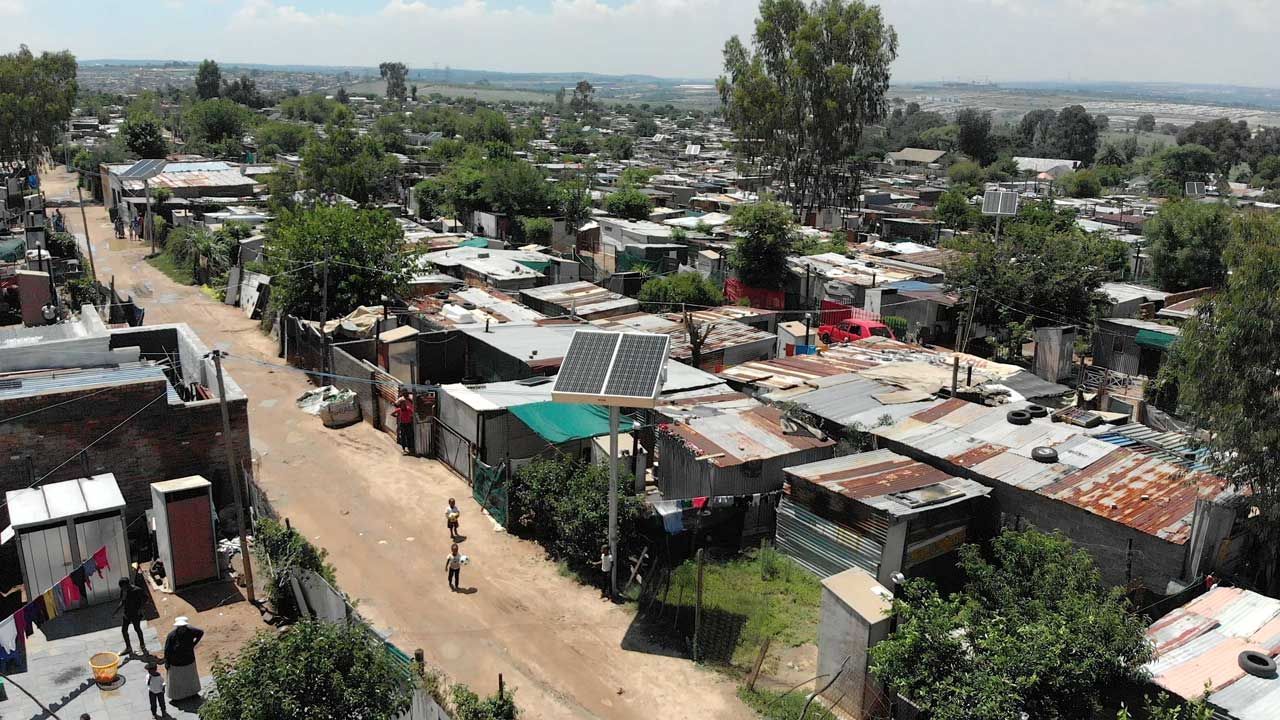
Solar-Powered Microgrid Distribution Methods
Solar generation and storage DC microgrids offer a promising solution to bridge gaps in disconnected grid infrastructure. In the design of low-voltage DC microgrid systems catering to full household power, reliability, modularity for future growth, and minimal maintenance are key considerations.
Utilizing low-voltage direct current compliant with regulatory standards ensures energy supply within a range with minimal risk of dangerous electrical shock. This characteristic facilitates swift training and the deployment of installation processes. Frequently, projects leverage unskilled local labor for system installation and maintenance, contributing to economic improvement.
Solar Tower Power Distribution
Solar towers present an advanced solution, enabling higher capacity and intelligent devices with smart networking features (ITC) for efficient energy generation and storage. To meet the consistent demand profile, energy must be distributed through wired reticulation among connected households, utilizing bundled DC appliances with varying DC voltages.
For instance, if a solar tower has a load profile of 3200W over 24 hours and all connected households use the same bundled DC appliance with a load profile of 200W each over the same period, the Solar tower can effectively supply energy to 16 houses daily. The advantage of a gridded system lies in the fact that consumers don’t all use their maximum demand profile simultaneously, allowing for better energy balancing.
Innovative Energy Management at the Core: The Technology Inside Solar Towers
Harnessing state-of-the-art industrialized technology, a solar tower houses its internal energy management hardware within a tamper-proof tower head. This serves as the hub where the system’s core intelligence consistently validates data between internal hardware configurations, autonomously making management decisions based on these configurations, all while integrating safety features.
Recorded data on energy generation, stored energy, and consumed energy, along with other relevant datasets, is efficiently transmitted to cloud-based servers with minimal data overhead. This is achieved through a variety of connectivity protocol options tailored for efficient and secure data delivery.
Standard and Management Systems
Every Solar Tower seamlessly integrates into remote management platforms, providing comprehensive system and customer management, billing services, point-of-sale administration, consumption management, switching controls, and more. Renowned for their durability, solar towers are meticulously constructed, set up, and maintained to adhere to the highest specifications and safety standards. Harnessing the latest technologies, these towers exemplify cutting-edge engineering with features such as:
- Photo Voltaic Modules (Solar Panels): TUV and IEC-approved (25-year performance warranty).
- Lithium Iron Phosphate Storage: IEC 62620/EC 2014/11 (10-year or 4000 cycle warranty)
- MPPT Charge Controllers: EN/IEC 62109-1, UL 1741, CSA C22.2 (5-Year Warranty)
And conforming to the following standards:
- SANS 959-1
- NRS 052 -1
- SANS10142-1/2/3
- SANS 62305 -1
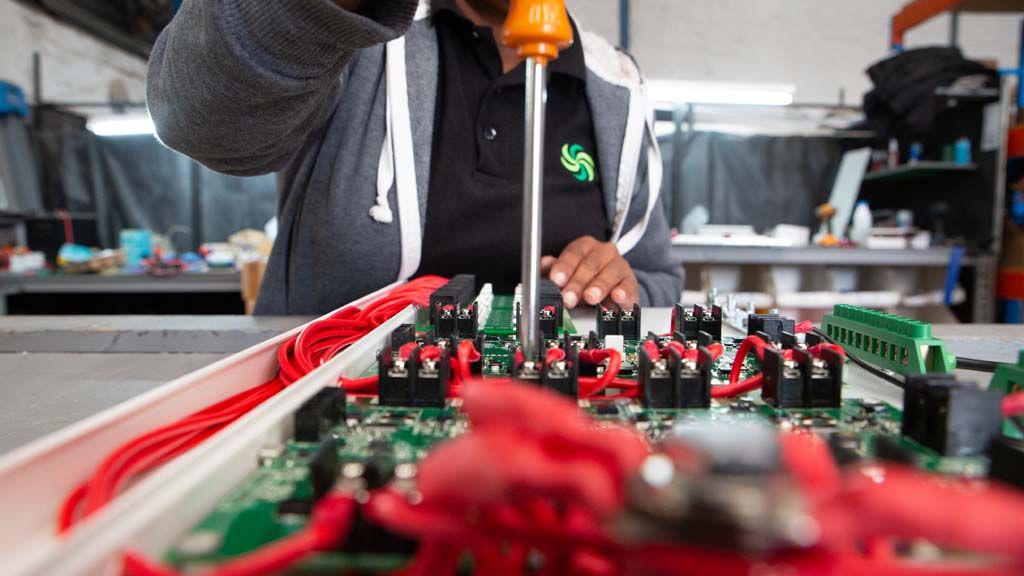


Energy management applications effortlessly tap into this wealth of information, granting solar specialists the ability to remotely program and configure key components for optimal performance. The delicate balancing act of energy resources ensures a seamless match with the load demands of households’ DC appliances. Any surplus energy is intelligently directed, either distributed or stored for later use.
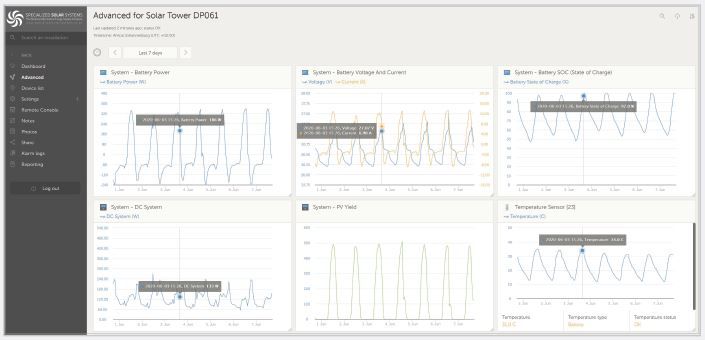
In a 24-hour cycle, each household’s DC appliance bundle operates at a specific wattage. The consumption is precisely monitored and reset upon completing the cycle. In cases where the total usage exceeds the load profile over a cycle, automated actions kick in. These can include notifying the consumer to reduce usage or automatically switching off the energy supply. To ensure safety and control, each household is equipped with a DC meter featuring short-circuit protection and a configurable peak usage threshold (current limiter).
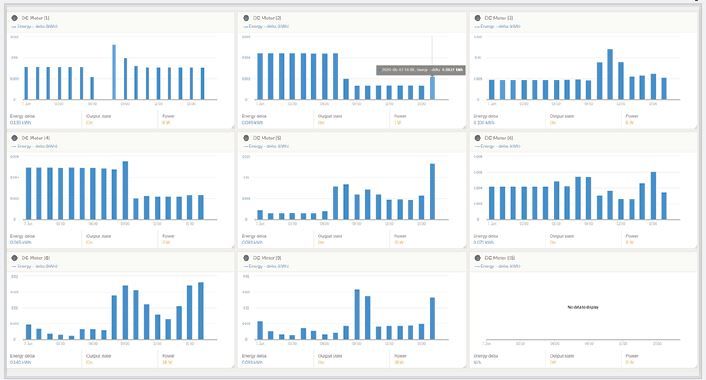
SSS-EPOWER Utility-styled remote smart-grid energy management
Specialized Solar Systems has been perfecting solar generation as the primary energy source for large-scale low-voltage DC electrification since 2012. Our in-house software development, continuously refined over the years, now culminates in SSS-EPOWER—a web management platform designed to unify all electrification aspects for efficient solar energy distribution.
This platform plays a key role in off-grid projects, offering remote system management and on-site operations based on real-time data. Currently overseeing thousands of homes, SSS-EPOWER is at the forefront of billable solar energy management.
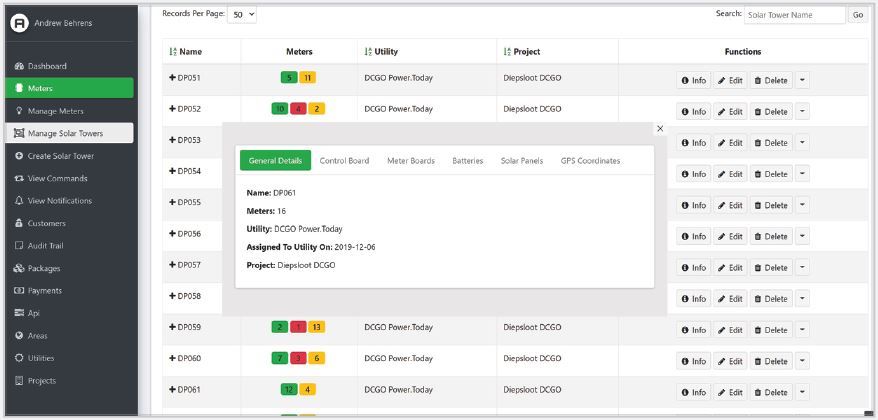
Key features:
- Solar system and meter management.
- User administration and management.
- Customer administration and management.
- 24 Hour cycled reset Watt-hour (Wh) metering with threshold switching.
- Automated billing options with non-payment switching.
- Vendor payment facilitation and management.
- API Payment integrations.
- Stock control with system logistics.
- Advanced security features.
- End-user interaction.
- Detailed reporting and systems overview.
- Audit trail system and user logging.
The framework provides tools to remotely manage Solar Towers and customer billing with the point of sales vendor management and API payment integrations for convenient customer payment methods wherever there is cell phone coverage.
It allows for the recording of many customers and Solar Tower data attributes such as GPS coordinates, usage and switching history, transactional audit trails, detailed hardware, and customer details.
PAYGO Billing method, unique:
- The PAYGO billing package is a rental-based payment for daily usage upfront billing structure.
- The customer only pays for the duration of the daily energy supply.
- PAYGO allows for varying amounts of value-driven rates to be added to a PAYGO billing package giving a customer attractive bundled options (Days versus Amount) when making payments.
- It includes ON and OFF switching directly related to a bundles’ expiry date, account balance, and 24-hour load profile consumption calculation total.
CONTRACT Billing:
- The contract billing package is a rental-based monthly debiting billing package.
- A value is set for the energy supplied, and this value is deducted monthly on a defined day every month.
- It includes ON and OFF switching directly related to the account balance on the monthly debit date and a 24-hour load profile consumption calculation total.
- The package includes a reconnection value and, if selected, will charge the account with the value if switched off due to a lack of payment.
AD-HOC DEBITS AND CREDITS:
- Both billing packages support ad-hoc account debits and credits, which can be allocated to a customer’s account with detailed descriptions.
- For example, if a technician is sent out to replace a broken LED DC light bulb, this can be charged directly to the customer’s account and will only be due for payment at the billing package debit or expiration date.
- Alternatively, a credit value may be issued if, for example, the system had to be switched off in order to fully recharge the battery after a very bad patch of weather.
- Every transaction is logged with the user-administrator details in an advanced searchable audit trail.
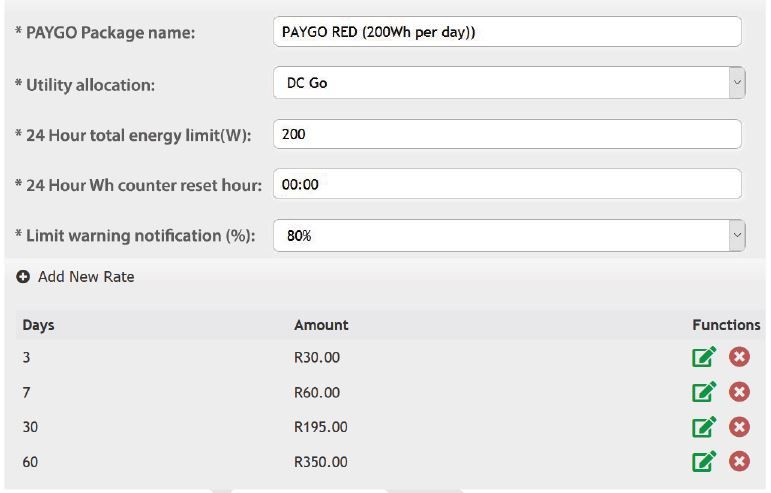
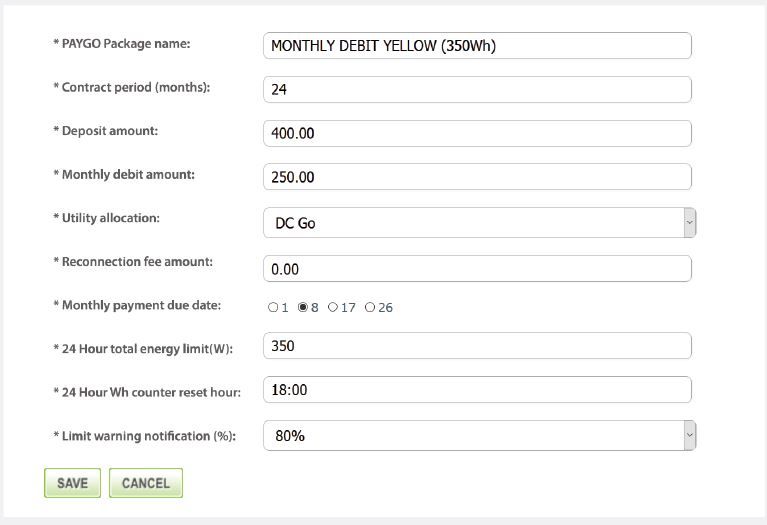
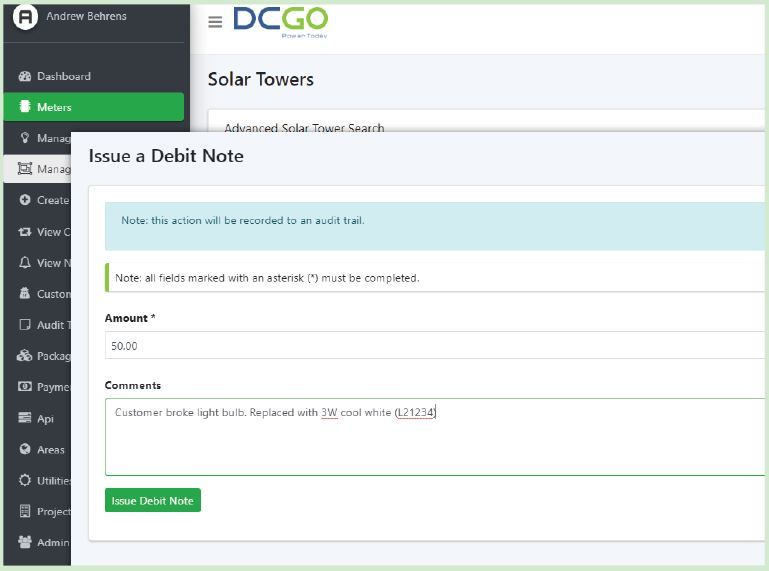
Project Expansion
Specialized Solar Systems is continuously researching and pioneering new methods to enhance and add value to products and better solutions. Currently, there are over 600 solar towers supplying low-voltage DC to up to 9600 households for an electrification project in Diepsloot, South Africa. The technology has performed satisfactorily and within the original design mandate. The take-up by the Diepsloot community has far exceeded expectations. There is a lot of commercial interest being shown due to the smart power delivery infrastructure and take-up.
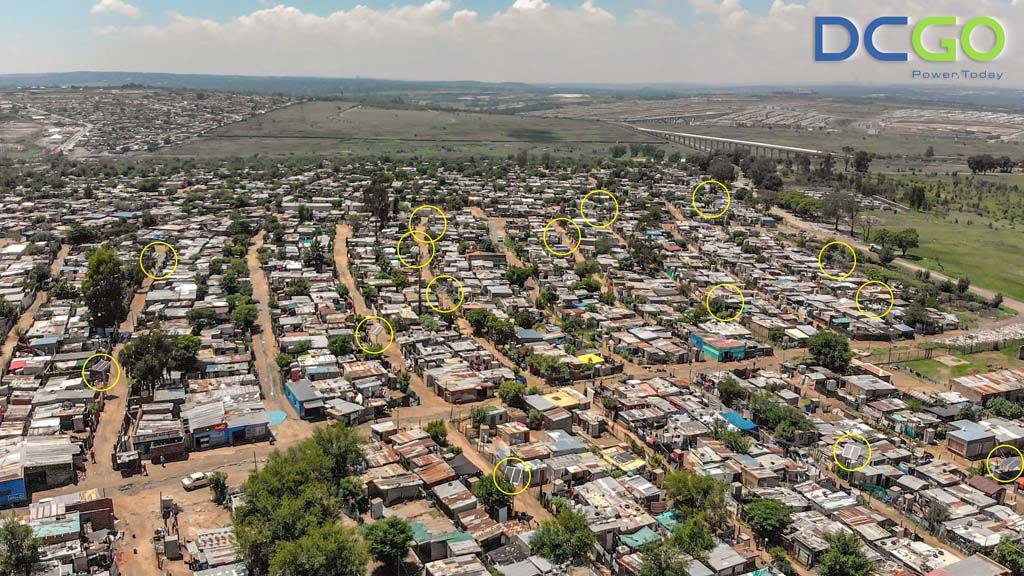
High Voltage Power: 350VDC
Specialized Solar Systems is spearheading a project in collaboration with Dutch universities in the Hague and Amsterdam and several South African universities of technology. The project aims to demonstrate a 350VDC high-voltage transfer of power between solar towers, allowing for grid interconnectivity. This will ensure that solar towers become a permanent infrastructure, giving customers more options with the possibility of cooking and operating high-powered electrical devices.

SPECIALIZED SOLAR SYSTEMS: A proven track record of delivery
2007-2009
Using low-voltage DC, many power boxes or stand-alone power storage systems were designed for specific and customized purposes. Devices that provide lighting, emergency systems assistance, and backup power, entertainment, and charging of cell phones.
2009-2010
Prototype Solar Home Systems (SHS) or DC Microgrids with efficient DC LED lighting and appliances were developed and deployed in rural locations in Transkei, Limpopo, KwaZulu Natal, and Malawi to test and gauge system performance and customer satisfaction.
2011-2012
Developed urban-modeled DC Micro-grids for rural and township roll-out. Consultation with electrical engineers on safety features for urban applications. The social impact study report was completed by Bianco Curry. Collaboration with the Stellenbosch Sustainability Institute and Innovation Lab (Stellenbosch University) and the University of the Free State were formed and community training models for the introduction to DC Microgrids were established. Documentation for rural low-voltage electrification was developed. An online management system with remote switching begins.
Tsomo, KwaZulu Natal: 200 SHS’s, Botswana: 250 SHS’s, SHS’s retail outlets in Kenya, and Zambia were formed.
2012-2015
SHS electrification projects for indigent and disconnected communities. Ongoing product development and improvement resulting in scalable, modular, and remotely managed SHS with implementation and sustainable programs documented for NGO’s, government Department of Energy (DOE) Concessions. New billing methods, POS, and billing methods applied to in house software development. Department of Energy and concession holder implementation. Bill Gates foundation approved 1750 systems.
DoE, Matatiele District, Eastern Cape; 900 SHS’s. Botswana: 400 SHS’s for schools, post offices, and rural/urban households. North West municipality upgrade of informal settlement with 1850 units. DoE, Schmidtsdrift, Northern Cape 1850 SHS’s. Department Agriculture and land reform, Groblershoop Municipality Northern Cape 410 SHS’s. DoE Limpopo Concessionaire: 1500 SHS’s. DoE Oudtshoorn 660 SHS’s. LDM Engineering, Eastern Cape: 800 SHS’s. Power Mode, Eastern Cape 800. Peer Africa, ! Kheis, Northern Cape: 500 SHS’s. Defy 100 DC Fridge systems. 2016 – Private funding initiatives. Developments of larger mini- gridded System prototypes. Concessionaire, Polokwane, Limpopo: 700 SHS’s. Jabula, Western Cape, Substation Prototype 1 Substation 8 houses.
2017-2019
Improved SHS’s. Focus on Solar Tower development with collaboration with Victron Energy. Upgrade on web remote management systems to include advance remote system management, consumption metering, and API payment integrations.
DOE, Western Cape: 1000 SHS’s. DOE, Northern province: 573 SHS’s. DOE Oudtshoorn 200 SHS’s. Anglo Trust, Eastern Cape: 231 SHS’s. DCGO, Nkaneng 14 Substations/53 homes electrified. KEP, Transkei 200 SHS including refrigeration. DOE, Concessionaire, Polokwane, 1650 SHS.
2019 – 2022
Ongoing Solar Tower ITC Networked product development and expansion planning for the inclusion of high-voltage 350VDC grid solar tower networks and fiber networks for the foreseeable future linking DC microgrids with traditional AC grids, allowing for bi-lateral transformation managed by smart electronics and ICT.
Diepsloot, 600 solar towers with the ability to power 9600 households Limpopo DOE; 650 SHS.






